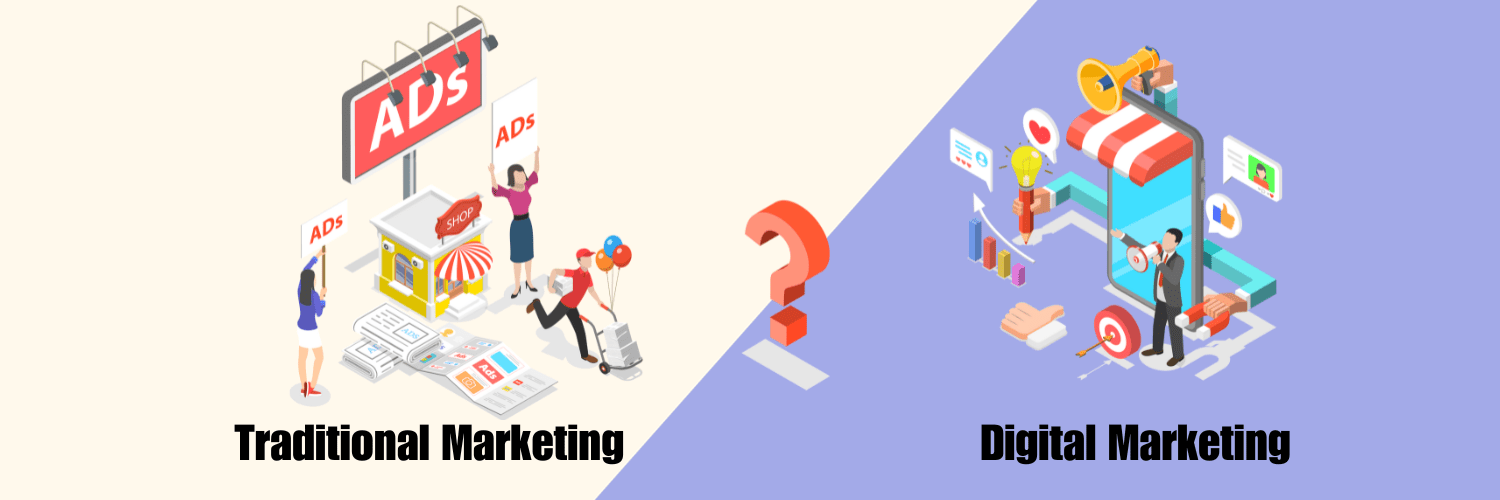
With the rise of technology, the way businesses promote themselves has changed significantly. Traditional Marketing methods, such as billboards, print ads, and flyers, once dominated the advertising landscape. However, in today’s digital age, businesses are increasingly turning to digital marketing methods to reach their target audience. In this blog, we will explore the advantages of digital marketing vs traditional Marketing methods.
1. Reach
Traditional Approach: It is limited reach with billboards or print ads, confined to specific locations.
Digital Approach: Global reach through digital marketing, leveraging platforms like Facebook and Twitter with millions of users worldwide. Targeting specific audiences ensures messages reach those most interested.
2. Cost
Traditional Approach: It is incredibly expensive, with billboard and print ad costs reaching thousands of dollars.
Digital Approach: Generally more affordable, with social media advertising as a cost-effective option. Real-time tracking allows budget adjustments, ensuring optimal utilization.
3. Interaction
Traditional Approach: Static nature of billboards and print ads limits interaction and engagement.
Digital Approach: Interactive through social media platforms, enabling real-time engagement. Responding to comments and messages builds brand loyalty and fosters a positive reputation.
4. Flexibility and Control
Traditional Approach: Limited control over messages, once published, changes are challenging.
Digital Approach: Enhanced flexibility and control with real-time adjustments to digital ads. Responding to market changes and adjusting messaging is possible. Control over distribution channels ensures precise targeting.
5. Data and Analytics
Traditional Approach: Little data available, making informed decisions challenging.
Digital Approach: Wealth of data and analytics in digital marketing. Tracking effectiveness, measuring engagement, and informed decision-making are key advantages.
6. Mobile Optimization
Traditional Approach: Limited mobile optimization in traditional methods, missing out on the increasing mobile user base.
Digital Approach: Mobile-friendly content in digital marketing, catering to the growing number of users accessing information through smartphones. Responsive websites and mobile apps enhance user experience.
7. Adaptability to Trends
Traditional Approach: Slower adaptation to emerging trends in the market.
Digital Approach: Quick adaptation to trends in digital marketing, leveraging new platforms, technologies, and consumer behaviours for strategic advantage.
In today’s market, transitioning from traditional to digital marketing is no longer a luxury but a necessity. The benefits of digital marketing far outweigh those of conventional methods, including global outreach, affordability, interactivity, and the ability to adapt to modern trends. By leveraging real-time adjustments, data-rich analytics, and streamlined mobile optimization, businesses can gain a competitive edge.
Embracing the digital age can help reinforce direct engagement, brand loyalty, and strategic responsiveness to emerging trends. In sum, digital marketing provides a foundation for effective, efficient, and forward-thinking brand promotion. If you wish to learn digital marketing then click here, we have 100% practical digital marketing course designed by industry experts.